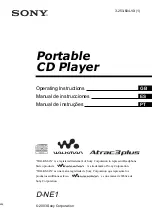
Dictionary Database Structure
Data Definition Language (DDL) Reference Manual — 426798-002
D -46
Object Definition File
entered into the dictionary, it is given the current value of NEXT-OBJ. NEXT-OBJ is
then incremented by 1.
NEXT-TEXT-ID is used by the DDL compiler to assign text numbers to text items as
they are added to the dictionary. Like NEXT-OBJ, NEXT-TEXT-ID has an initial value of
1 and is incremented after a text item is entered into the dictionary.
VERSION contains the version number of the dictionary. This value will not change
unless you regenerate the dictionary with a different version of the DDL compiler.
After PARTNAME and PARTS are added to a new dictionary, DICTDDF will contain the
following values.
NEXT-OBJ:3
NEXT-TEXT-ID:7
VERSION:4
Object Definition File
DICTODF, a key-sequenced file, contains one record for every object (definition,
record, service, server, requester, screen) entered into the dictionary. The three most
important fields of this file are OBJECT, IDENTIFIER.NAME, and
IDENTIFIER.OBJECT-TYPE.
For the sample dictionary shown in
Figure D-2
on page D-49, DICTODF will contain
the following values in these fields:
Object Build List
DICTOBL, a key-sequenced file, contains one record for each element of each DDL
object (record or definition) in the dictionary. The primary key of DICTOBL is the object
number (IDENTIFIER.OBJECT) and an element number (IDENTIFIER.ELEMENT) that
identifies each element within an object. Each DICTOBL record contains most of the
information needed to describe an element: the element's name, data type, size, offset
within the object, text ID number, and other information.
For the sample dictionary shown in
Figure D-1
on page D-45, DICTOBL contains the
following values:
OBJECT
IDENTIFIER.OBJECT-TYPE
IDENTIFIER.NAME
COMMENT-TEXT
1
ID
partname
0
2
RD
parts
0
IDENTIFIER.
OBJECT
IDENTIFIER.E
LEMENT
LOCAL-
NAME
PICTURE-
TEXT
HEADING-
TEXT
VALUE-
TEXT
UPSHIFT
1
0
partname
1
2
N
2
0
parts
N
2
1
partname
N
















































